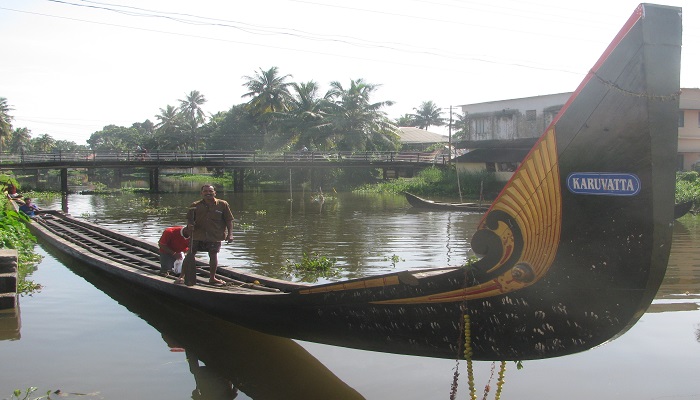
Anyone who has witnessed Kerala’s boat races would have paused at least once to admire the splendour of the 100 ft long snake boats or chundan vallams as they skim swiftly over water.
With their traditional design resembling a snake with its hood raised, these chundan vallams were originally designed to serve as war boats. Over the decades, the only design change was brought in to accommodate the chanting thalakkar, where once platforms for cannons were installed.
Designing a snake boat is an expensive and elaborate process, which requires great skill, that has been passed down through generations. As boat craftsman Uma Maheshwaran, son of Narayanan Achari, who built the Nadubhagam Chundan that won the first Nehru Trophy Boat Race in 1952, says, “These boats carry the expectations of thousands of people, so they are built to last.”
We take a cruise alongside some of Alappuzha’s boat makers as they explain the work that goes behind creating the boats, which serve as a symbol of pride for their villages.
Boat craftsman Uma Maheshwaran, who has made 11 snake boats till date, tells us, “Aanjili wood from high ranges such as Pala, Erattupetta, and Munnar is preferred for making the boats, as they do not absorb much water and are also stronger compared to those in low-lying lands that have easy access to water.” To build a 100-ft long snake boat, four trees are required and care is taken to choose ones with curves that suit the design. “These trees are then cut into logs manually using saws, then dried, and brought to the crafting shed (malipura).”
A core team of 10 men builds a mould made of ordinary wood similar to the body, which is then overturned. The snake boat’s bottom half is made by sculpting three long pieces of Aanjili wood around the mould. “These portions are most in contact with water while racing, so care has to be taken so that there is no gap between them,” says Sree Rag A, who is part of a boat club in Alappuzha. Once the three pieces are attached, the skeletal structure is overturned and the mould removed.
Two more pieces on either side complete the body of the snake boat. These structures are installed through a lock-joint system. The connections are then sealed using traditional resins formed by mixing chenchilyam and cotton. Uma’s son Rajan tells us, “The sealant prevents mould formation and also makes the system waterproof.” After the main structure is made, the team affixes the stern and the nose, which are separately crafted based on the client’s requirements.
The real fun begins once this process is done. Rhythmic beats – be it from the hammer knocking the copper nails into wood or the sound of electric jig saw that shapes the structure – fill the shed. “We all follow a rhythm when we rebate the wood with copper nails and there’s music created with a hammer and saw whenever we are working,” says Uma. “In a way, we recreate the atmosphere of the race as if the thaalakkar are the ones tapping the wood. I have to ask the workers not to tap their feet when we are working at that time.”
The last stage includes affixing the wooden planks for the seating of oarsmen. “After that, the boat is painted and taken out of the malipura,” says Uma.
The entire process with a team of 10 men takes at least eight months to finish. Some boats take even longer,” he says.

Post Your Comments